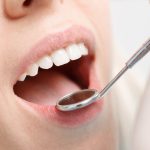When to Brush Your Teeth After Fluoride Treatment: A Comprehensive Guide
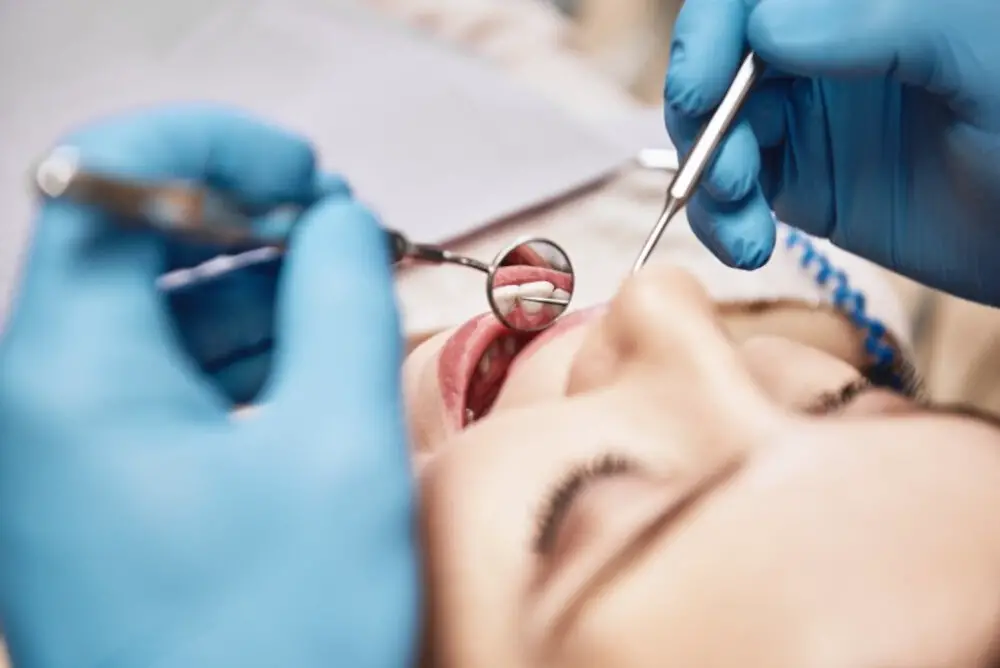
Maintaining healthy teeth and gums is essential for overall health and well-being. Regular brushing, flossing, and fluoride treatment are some of the ways to keep your teeth healthy and prevent tooth decay. Fluoride is widely used to strengthen teeth and prevent cavities. However, many people are often unsure about when to brush their teeth after fluoride treatment. In this comprehensive guide, we will discuss when to brush your teeth after fluoride treatment and provide you with all the necessary information you need to maintain healthy teeth. Fluoride treatment is a popular method used by dentists to prevent tooth decay and strengthen enamel. Fluoride is a mineral that helps to remineralize teeth and prevent the formation of cavities. It’s often applied to the teeth in the form of a gel, foam, or varnish during dental checkups. However, brushing your teeth immediately after a fluoride treatment can interfere with its effectiveness. Therefore, it’s essential to understand when to brush your teeth after fluoride treatment to maximize its benefits. In the following sections, we will delve deeper into the topic and provide you with all the necessary information you need to maintain healthy teeth.
Fluoride treatment is a dental procedure that helps to strengthen and protect the teeth from decay and cavities. During the treatment, a fluoride solution is applied to the teeth, which helps to remineralize the enamel and make it more resistant to acid attacks. The fluoride works by replacing lost minerals in the enamel, which can occur due to poor oral hygiene or a diet high in sugar and starch. The treatment is painless and quick, and can be performed by a dentist or dental hygienist. After the procedure, it is important to follow the dentist’s instructions on when to brush your teeth, as brushing too soon can reduce the effectiveness of the fluoride treatment.
Brushing teeth after fluoride treatment is crucial for maintaining oral hygiene and maximizing the benefits of the treatment. Fluoride treatment is a dental procedure that helps to strengthen teeth and protect them against cavities. It works by depositing fluoride ions on the surface of the teeth, which makes them more resistant to acid attacks from bacteria. However, if the teeth are not brushed after treatment, the fluoride ions may not be fully absorbed into the enamel, and bacteria may still be present on the surface. This can lead to a reduced effectiveness of the treatment and an increased risk of tooth decay. Therefore, it is recommended to brush teeth after fluoride treatment to remove any remaining bacteria and ensure optimal oral health.
Understanding Fluoride Treatment
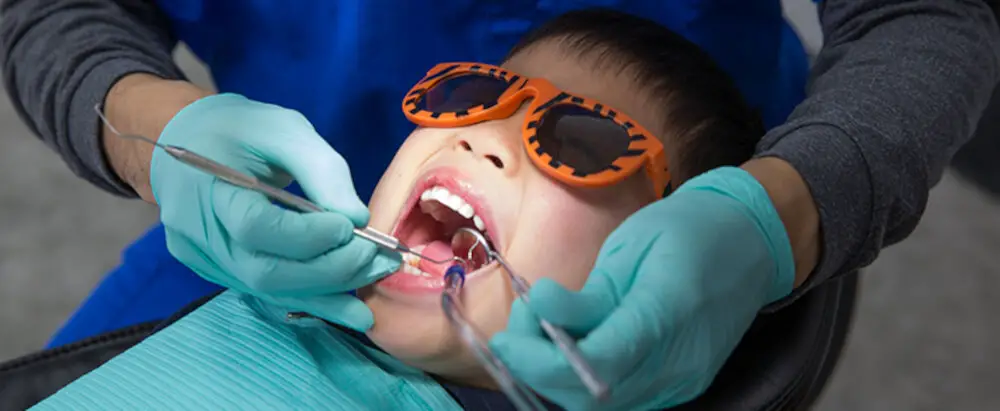
Fluoride treatment is a dental procedure that involves the application of fluoride to the teeth to prevent tooth decay. Fluoride is a natural mineral that is found in many foods and water sources, and it helps to strengthen tooth enamel, making it more resistant to decay. Fluoride treatment is particularly beneficial for those who are at high risk of developing dental caries, such as children, seniors, and those with weakened immune systems. During a fluoride treatment, a dental professional will apply a fluoride gel or varnish to your teeth using a brush or tray. The fluoride will be left on your teeth for a specified amount of time, usually a few minutes, to allow it to penetrate the enamel and strengthen it. After the treatment, you will be advised to avoid eating or drinking for at least 30 minutes to allow the fluoride to fully absorb into your teeth. It is important to follow your dentist’s instructions carefully to ensure that you receive the full benefits of the treatment.
Fluoride treatment is a dental procedure that involves the application of fluoride to the teeth to prevent tooth decay and strengthen tooth enamel. This treatment is usually done in a dental office and involves the use of a gel, foam, or varnish that contains high levels of fluoride. Fluoride is a mineral that helps to rebuild tooth enamel and protect teeth from acid attacks caused by bacteria in the mouth. Fluoride treatment is recommended for both children and adults, especially those who are at a higher risk of developing tooth decay. It is a safe and effective way to maintain good oral health and prevent dental problems.
Fluoride is a mineral that works to protect teeth by strengthening the enamel, which is the outer layer of the tooth. When we consume fluoride, it becomes incorporated into the tooth structure, making it more resistant to acid attacks from bacteria in the mouth. Fluoride can also help to reverse early signs of tooth decay by remineralizing weakened areas of enamel. Additionally, fluoride can reduce the amount of acid produced by bacteria in the mouth, which can further prevent tooth decay. Overall, fluoride is a powerful tool in maintaining good oral health and preventing tooth decay.
There are various types of fluoride treatments available to improve dental health. The most common method is topical application, which involves using fluoride solutions, gels, varnishes, or foams that are directly applied to the teeth. Systemic fluoride treatments are also available, which are ingested in the form of tablets, drops, or fluoridated water. In-office fluoride treatments may also be performed by dentists, which involve applying a highly concentrated fluoride solution to the teeth for a few minutes. Additionally, prescription fluoride toothpaste and mouthwash are also available for home use. These treatments can help prevent tooth decay, strengthen enamel, and promote overall dental health. It is essential to consult with a dental professional to determine the best fluoride treatment for your specific needs.
Benefits of Fluoride Treatment
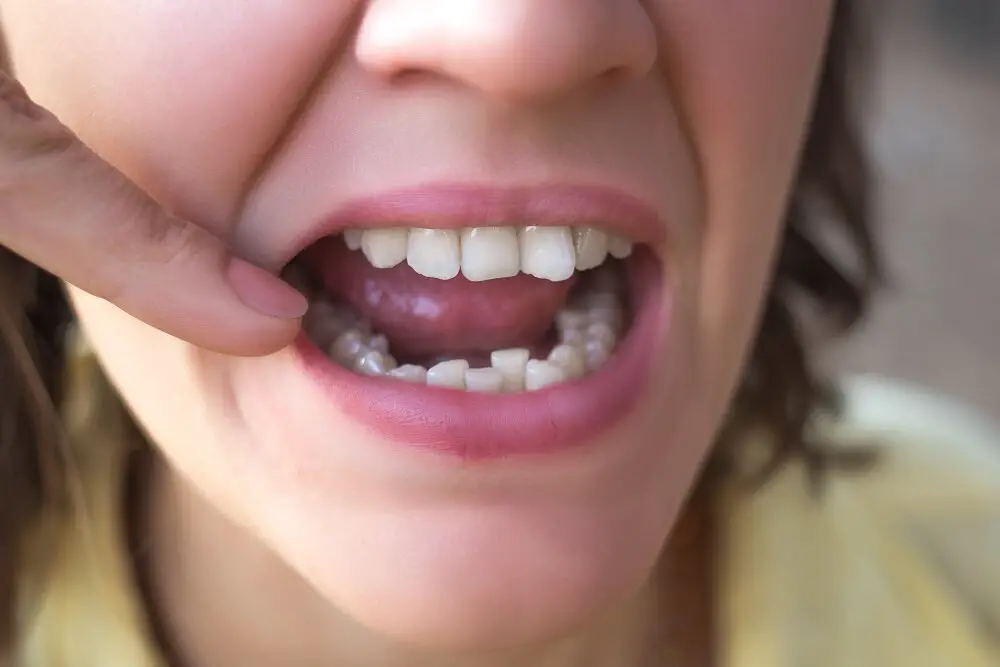
Fluoride treatment is a procedure that involves applying a concentrated fluoride gel or foam to teeth to prevent tooth decay. This treatment has numerous benefits that make it an essential part of dental care. One of the primary benefits of fluoride treatment is the strengthening of teeth. Fluoride helps to remineralize the tooth enamel, making it more resistant to decay. This is especially important for individuals who are at a higher risk of developing cavities, such as children and those with a history of tooth decay. Additionally, fluoride treatment can reverse the early stages of decay, preventing the need for more invasive dental procedures in the future. Another benefit of fluoride treatment is the prevention of tooth sensitivity. Sensitive teeth can be caused by a number of factors, including enamel erosion and gum recession. Fluoride can help to strengthen the enamel, reducing sensitivity and discomfort. It can also help to prevent the development of cavities around the gum line, where sensitivity is often most pronounced. Overall, fluoride treatment is a safe and effective way to protect and strengthen teeth, making it an important part of any oral hygiene routine.
Tooth decay is a common dental problem that can lead to cavities, gum disease, and even tooth loss. It occurs when bacteria in the mouth produce acids that eat away at the tooth’s enamel. Fortunately, there are several ways to reduce the risk of tooth decay, including practicing good oral hygiene, avoiding sugary and acidic foods and drinks, and regularly visiting the dentist. However, one of the most effective ways to prevent tooth decay is through the use of fluoride. Fluoride helps to strengthen tooth enamel, making it more resistant to acid attacks from bacteria. Regular fluoride treatment, combined with proper brushing and flossing, can significantly reduce the risk of tooth decay and keep your smile healthy and beautiful.
Strengthening tooth enamel is a crucial aspect of maintaining oral health and preventing decay. Enamel is the hard, outer layer of the tooth that protects it from damage. Fluoride treatment is one of the most effective ways to strengthen tooth enamel. Fluoride works by remineralizing the enamel and making it more resistant to acid attacks. This process helps to repair early signs of decay and prevent cavities from forming. Regular use of fluoride toothpaste and mouthwash can also help to strengthen tooth enamel. It is important to note that while fluoride is beneficial for dental health, excessive fluoride intake can lead to fluorosis, a condition that causes white spots and discoloration on teeth.
Preventing cavities is a crucial aspect of maintaining good oral health. The best way to prevent cavities is by practicing good oral hygiene, which includes brushing your teeth at least twice a day with fluoride toothpaste, flossing daily, and limiting sugary or acidic foods and drinks. Regular dental check-ups and professional cleanings are also essential in preventing cavities. Fluoride treatments can further strengthen tooth enamel and prevent cavities, but it is important to wait at least 30 minutes after a fluoride treatment before brushing your teeth to allow the fluoride to fully penetrate the enamel. By incorporating these habits into your daily routine and following the guidelines for fluoride treatment, you can help prevent cavities and maintain a healthy smile.
Fluoride treatment is not only effective in preventing tooth decay and cavities, but it also has other benefits. It strengthens the enamel, making it more resistant to acid attacks from bacteria and sugary foods. Fluoride can also help repair early stages of tooth decay before they become cavities. Additionally, fluoride can reduce tooth sensitivity by strengthening the enamel and reducing exposure to hot and cold temperatures. It can also improve overall oral health by reducing the amount of plaque on teeth and preventing gum disease. Fluoride treatment is a simple and effective way to maintain good oral health and prevent dental problems.
When to Brush Your Teeth After Fluoride Treatment
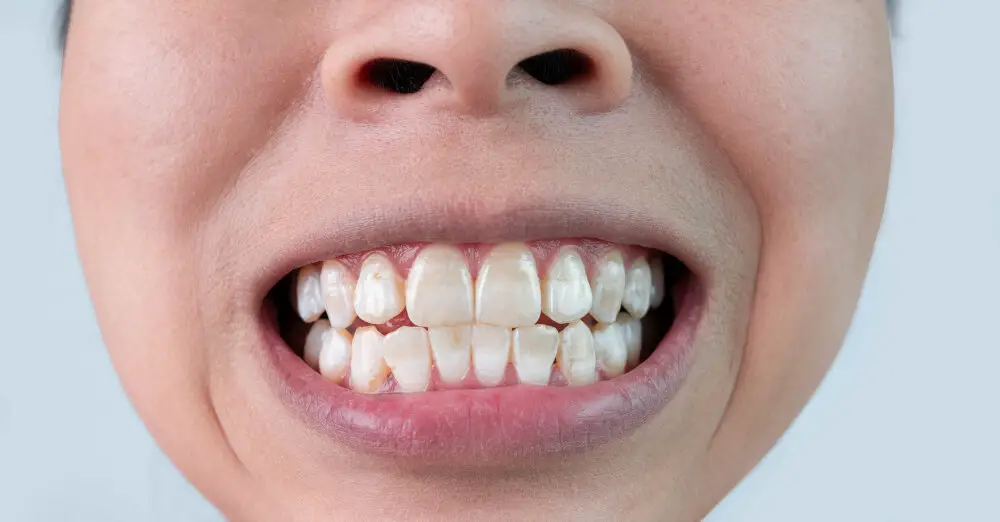
Fluoride treatment is a common dental procedure that helps to prevent tooth decay and strengthen teeth. After getting fluoride treatment, it’s important to know when to brush your teeth to ensure the treatment is effective. It’s best to wait at least 30 minutes after fluoride treatment before brushing your teeth. This allows the fluoride to be fully absorbed by the teeth, making it more effective in preventing tooth decay. However, if you feel the need to brush your teeth immediately after the fluoride treatment, it is recommended to wait for at least 5-10 minutes. Brushing too soon after fluoride treatment can cause the fluoride to be washed away, reducing its effectiveness. It’s also important to use a soft-bristled toothbrush and fluoride toothpaste to brush your teeth. This will help to avoid damaging your teeth or gums while also helping to maintain the strength of your teeth. Remember, brushing your teeth after fluoride treatment is essential to maintaining good oral health, but it’s important to do it at the right time to ensure the treatment is effective.
After a fluoride treatment, it is important to wait at least thirty minutes before brushing your teeth. This is because the fluoride needs time to fully penetrate and strengthen the enamel of your teeth. If you brush too soon after the treatment, you risk removing some of the fluoride and reducing its effectiveness. Additionally, brushing too aggressively can also damage the newly strengthened enamel. So it is best to be patient and wait the recommended amount of time before brushing your teeth after a fluoride treatment.
Waiting after a fluoride treatment is necessary to allow the fluoride to fully penetrate the tooth enamel and provide maximum benefits for your oral health. Fluoride works by strengthening the enamel, making it more resistant to decay and acid attacks. However, if you brush your teeth too soon after a fluoride treatment, you risk removing the fluoride from the surface of your teeth before it has a chance to fully absorb. It’s important to be patient and wait at least 30 minutes before brushing your teeth after a fluoride treatment to ensure that you’re getting the most out of the treatment and protecting your teeth from future dental issues.
Brushing your teeth after a fluoride treatment is essential for maintaining good oral hygiene. However, it is crucial to wait for a specific time to brush your teeth after treatment. Brushing too soon after a fluoride treatment can lead to tooth sensitivity and erosion of the enamel. This is because fluoride treatment makes the enamel temporarily softer, and brushing too soon can damage it. The acidic ingredients present in the toothpaste can also react with the fluoride, leading to the erosion of the enamel. Moreover, brushing too soon after treatment can also reduce the effectiveness of the fluoride treatment, making it less effective in preventing tooth decay. Therefore, it is essential to wait for at least 30 minutes after a fluoride treatment before brushing your teeth.
Proper Tooth Brushing Techniques After Fluoride Treatment
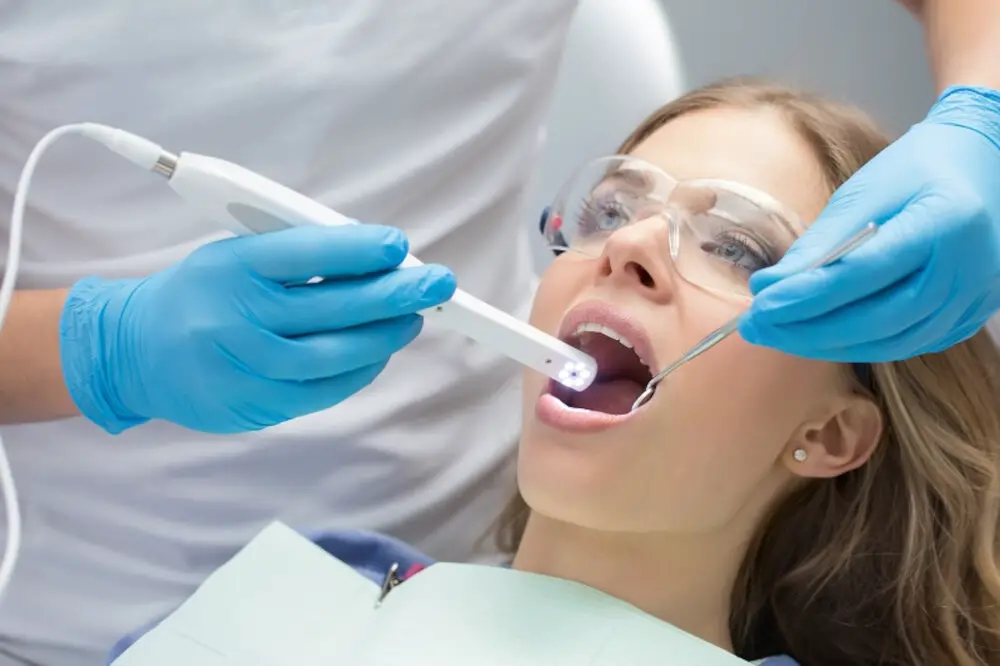
Proper tooth brushing techniques after fluoride treatment are essential to maintain good oral hygiene and maximize the benefits of the fluoride treatment. After receiving a fluoride treatment, it is recommended to wait at least 30 minutes before brushing your teeth. This allows the fluoride to fully absorb into your teeth and provide the maximum protection against cavities. After the waiting period is over, it is important to use proper brushing techniques to ensure that all surfaces of your teeth are cleaned effectively. To begin, select a soft-bristled toothbrush and apply a pea-sized amount of fluoride toothpaste. Hold the toothbrush at a 45-degree angle to your teeth and use gentle circular motions to clean the front, back, and chewing surfaces of each tooth. Be sure to spend at least two minutes brushing your teeth, and don’t forget to brush your tongue and the roof of your mouth to remove bacteria that can cause bad breath. Rinse your mouth with water and spit out the toothpaste after brushing. Avoid brushing too hard, as this can damage your teeth and gums. In conclusion, after receiving a fluoride treatment, it is important to wait at least 30 minutes before brushing your teeth and to use proper brushing techniques to maintain good oral hygiene. By following these guidelines, you can maximize the benefits of your fluoride treatment and help keep your teeth healthy and cavity-free. Remember to visit your dentist regularly for check-ups and professional cleanings to maintain optimal oral health.
Fluoride treatment is a great way to strengthen your teeth and prevent cavities. However, it’s important to know when and how to brush your teeth after the treatment to maximize its benefits. To start, wait at least 30 minutes after the fluoride treatment before brushing your teeth. This will give the fluoride enough time to be absorbed by your teeth and work its magic. When brushing, use a soft-bristled toothbrush and fluoride toothpaste to gently clean all surfaces of your teeth and gums. Be sure to brush for at least two minutes and avoid brushing too hard, as this can damage your enamel. After brushing, spit out the toothpaste but don’t rinse your mouth with water. This will allow the fluoride to continue working on your teeth. By following these steps, you can ensure that your fluoride treatment is as effective as possible in keeping your teeth healthy and strong.
When it comes to choosing the right toothpaste, there are several factors to consider. Firstly, it’s important to look for a toothpaste that contains fluoride, as this mineral helps to strengthen tooth enamel and protect against cavities. Additionally, you may want to consider a toothpaste that is specifically formulated for your individual needs, such as sensitivity or whitening. Some popular toothpaste brands include Colgate, Crest, and Sensodyne. However, it’s always best to consult with your dentist to determine the best toothpaste for your specific oral health needs. Remember, brushing twice a day with a fluoride toothpaste is essential for maintaining good oral hygiene and preventing tooth decay.
The duration of brushing is a crucial aspect of maintaining good oral hygiene. Dentists recommend brushing your teeth for at least two minutes, twice a day, to ensure that all areas of your teeth are thoroughly cleaned. Not only is it essential to brush for the recommended amount of time, but the technique used is also vital. Brushing with gentle circular motions and paying attention to the gum line and hard-to-reach areas can prevent the buildup of plaque and bacteria. Neglecting to brush for the recommended duration can lead to the accumulation of harmful bacteria, which can cause tooth decay, gum disease, and other oral health issues. Therefore, it’s essential to take the time to brush properly to maintain excellent oral health.
Fluoride treatment is a crucial aspect of dental care that is often overlooked. Fluoride is a natural mineral that is found in many foods and water sources, but it can also be applied topically to the teeth. When fluoride is applied to the teeth, it helps to strengthen the enamel and protect against decay. This is especially important for children, as their teeth are still developing and are more susceptible to decay. However, fluoride treatment is beneficial for people of all ages and can help prevent cavities and tooth decay. By incorporating fluoride treatment into your dental care routine, you can ensure that your teeth remain strong and healthy for years to come.
After receiving a fluoride treatment, it is essential to wait before brushing your teeth. Brushing your teeth directly after a fluoride treatment can potentially diminish the effectiveness of the treatment. This is because the fluoride needs time to fully penetrate and strengthen the enamel of the teeth. Typically, it’s recommended to wait at least 30 minutes before brushing after a fluoride treatment. However, it’s always best to follow the instructions of your dentist or dental hygienist. Waiting to brush can help ensure that you get the full benefits of the fluoride treatment, leading to stronger and healthier teeth in the long run.
Proper tooth brushing techniques are crucial for maintaining excellent oral health. To achieve the best results, start by selecting a toothbrush with soft bristles and a small head. Apply a pea-sized amount of fluoride toothpaste to the brush and gently brush the teeth in circular motions for at least two minutes. Pay extra attention to the gum line, back teeth, and areas with fillings, crowns, or braces. Avoid brushing too hard, which can damage the enamel and cause gum recession. After brushing, rinse your mouth with water and spit out the toothpaste. Finally, don’t forget to replace your toothbrush every three to four months or when the bristles become frayed. By following these simple steps, you can keep your teeth and gums healthy and strong.
Conclusion

In conclusion, maintaining good oral hygiene is crucial for overall health, and getting regular fluoride treatments is an effective way to prevent dental cavities. However, it is important to know when to brush your teeth after fluoride treatment to maximize its benefits and avoid any negative effects. By following the comprehensive guide provided, individuals can ensure that they are getting the most out of their fluoride treatment and maintaining optimal oral health. Remember to consult with your dentist or oral health professional if you have any questions or concerns about fluoride treatment or oral hygiene in general. Let’s keep our smiles healthy and bright!



